The only Latin brand of the golden quartet of the 2000s, Claypaky is one of those cult manufacturers of intelligent projectors, like Martin, Vari-Lite and High End.
Driven by the vision of its founder, the late Pasquale Quadri, supported by the charisma of its director Pio Nahum, Claypaky has gone through three decades of intense change without faltering.
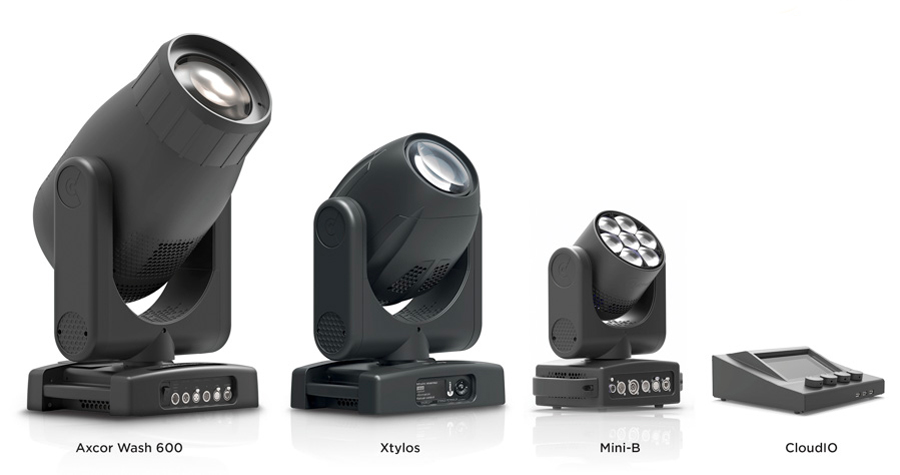
The return of the Transalpines, who had become Germans after Osram’s takeover just before Pasquale Quadri’s passing, was crucial, however. The success of the Sharpy in 2010, then the B-Eye three years later has slowly faded, despite exciting machines such as the Unico or the Axcor 900.
While our entire industry seems to be out of its global recession, Claypaky kills suspense in the bud with the revolutionary Xtylos (see report already posted here), an Axcor still expanding, and the HY B-Eye 15 and K25, long-awaited successors to the famous B-Eye models.
HY B-Eye K25 and K15
Partially unveiled during last Plasa, the HY B-Eye K25 and K15 follow the inevitable B-Eye K20 and K10 by doubling their power. Similar to their elders with this candy box still adorning their large fascia, a yoke and a base inspired by the Axcor series, their matrix boarding 37 and 19 LEDs, however, have undergone a radical change.
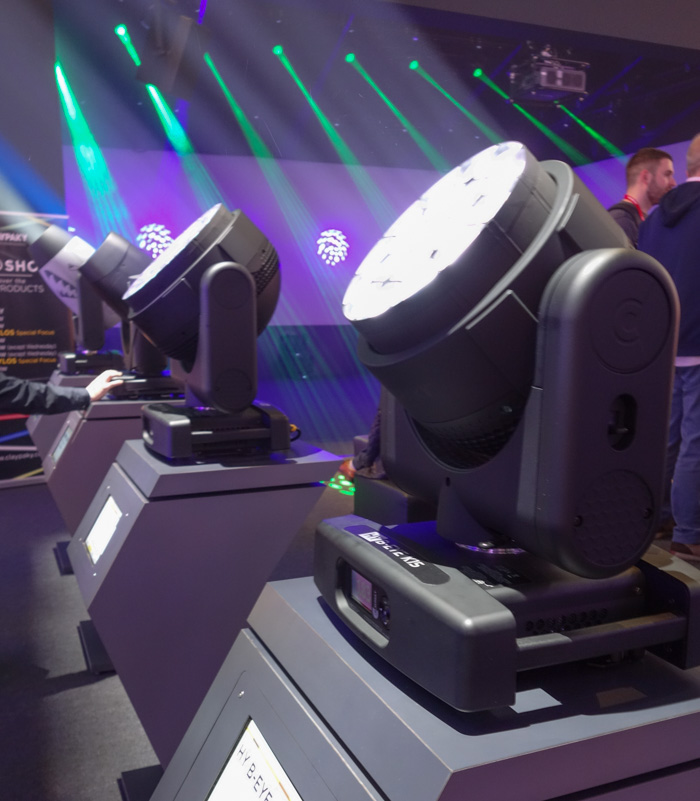
Between the exceptional brightness of their LEDs and the revisited design of almost transparent lenses, it is a real fire mouth that offer us the new K25 and K15.
Say goodbye to the Osram 15 W RGBW multi-chip, it’s a Stage II Osram Ostar of 40 W which provides the brightness. Powered at 30 watts to ensure absolute uniformity of many HY B-Eye’s over time, the light emitted by these LED chips is channeled to the very heart of the lenses.
This tailor-made process provides a homogeneous flow at maximum efficiency, which therefore requires some consumption for both models, 1100 VA and 600 VA for the K25 and K15, to give a phenomenal flow.
Color accuracy also gains several steps, with better RGBW distribution, a dedicated channel to control color temperature, a white balance from 2500 to 8000K and simulations of various sources, including the famous halogen lamps.
If the rest of the functions are identical to the Aleda B-Eye, DMX mapping included, many improvements are made to perfect their use. For instance, the mechanical zoom, whose wide range from 4° to 60° could jam under certain conditions, improves with automatic internal parking by the battery during the power failure of the machine.
In the same logic, the bidirectional rotation of the front panel now takes place without having to tighten the zoom beforehand, and is more rugged and silent than before. To conclude with these new strong points, let’s quote the integration of the Kling-Net protocol, while also very fashionable indeed, and that will greatly simplify video and light mixes in the LED mapping.
The first HY B-Eye K25 and K15 deliveries, with more than a hundred already in the pipeline at the time of the PL+S show, predict a success as big as the K20 and K10.
Axcor Wash 600
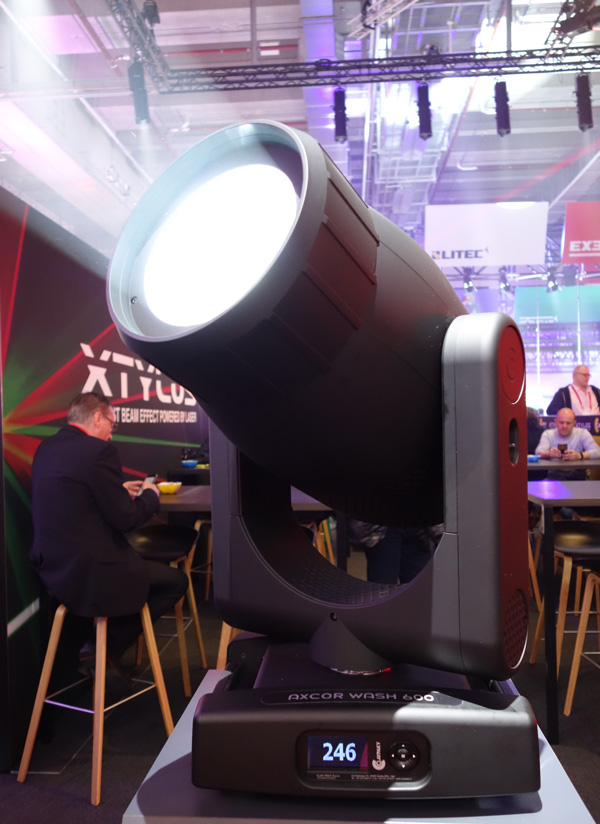
Built on the base of the Axcor Profile 600 with which it can be flawlessly associated, this Wash moving head is distinguished by its large 200 mm lens, its zoom range from 5° to 55°, a framing system module and its very complete color control system.
Available in two LED source versions, the Axcor Wash can be selected according to one’s needs. In standard version, 500 W of white LEDs provide a 28,000 lumens / 6500K light output, with CRI limited to 70. The HC version has its CRI go up to 90 with 21,000 lumens light output and 5600K white calibration.
In both cases, a choice of the output lenses is also possible, either in clear lens, in peeble convex (PC) or even in Fresnel, which will necessarily change a little the zoom range and luminous flux. These different lenses are interchangeable and can be purchased as a (clever) option.
No special optical effects for this moving head whose wash features collection is particularly rich, but Claypaky offers a judicious CMY color system, a CTO linear corrector and two color wheels, one with a CRI filter.
Mini-B
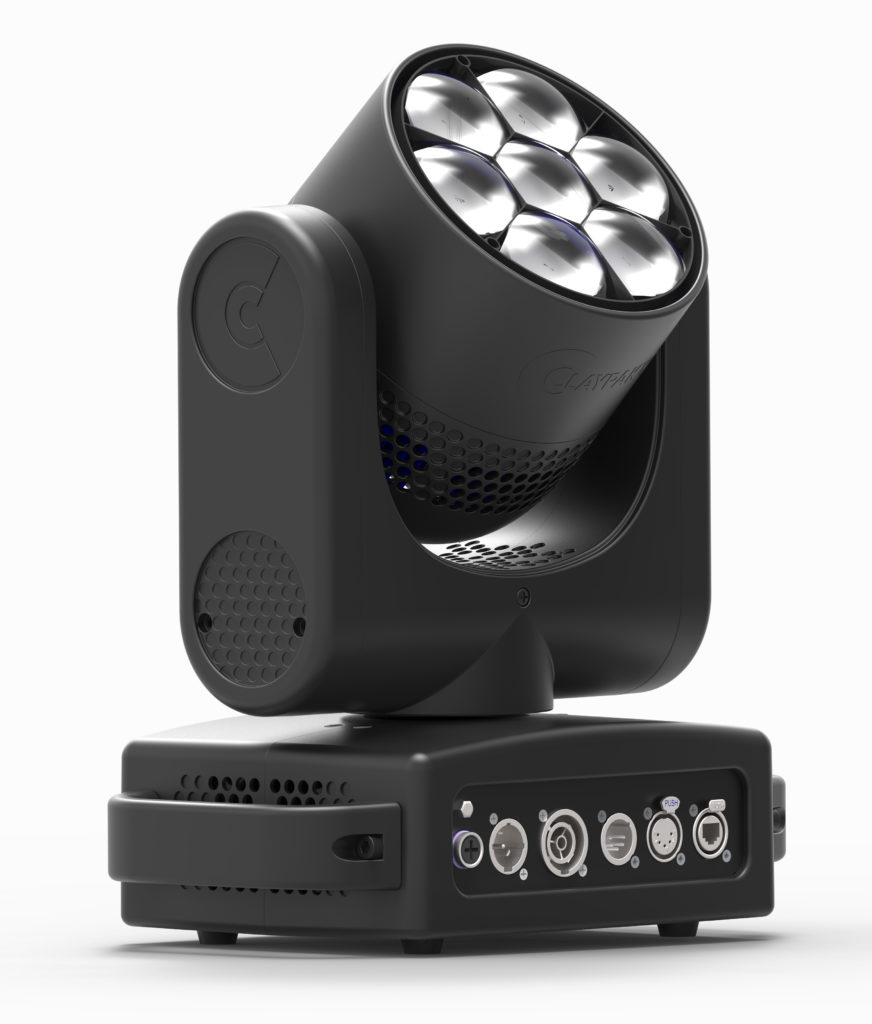
Some of you may remember the K5, this little brother a bit neglected from the Aleda series. It comes back today as the Mini-B, a concentrate of energy in a tiny body.
7 kg, about thirty centimeters high, faster than a Sharpy, with a floor bottom low price, but yet 240 W of top-notch RGBW LEDs, the Mini-B is likely to creep everywhere.
Designed with an outer ring of 6 LEDs and a central point, the Mini-B obviously does not lend itself to kaleidoscopic movements nor Vortex. Yet, its zoom from 4° to 55° allows the transition in the blink of an eye from a nervous Beam to an effective Wash with the carefully chosen colors.
The two LEDs zones can be controlled independently from the lighting desk or thanks to the internal macros to provide extra graphical effects. Smaller ever moving head to be manufactured by Claypaky, the mini-B should be available at the time of reading this.
CloudIO
A diagnostic and test tool for service technicians, the CloudIO automates a number of complex tasks. Usable with most Claypaky projectors, this interface is equipped with a touch screen and four encoders for manipulation, as well as DMX, Ethernet, USB and wireless connection.
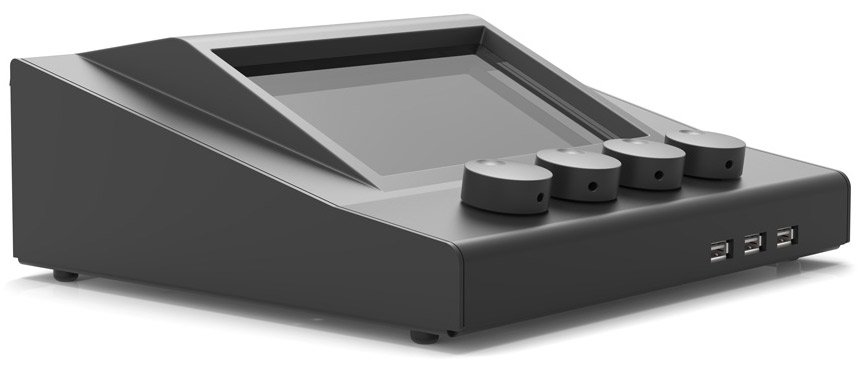
The data from the projectors are quickly analyzed, classified and sorted. Updates are available immediately, as well as online support from Claypaky if needed.
The information collected makes it possible to monitor each machine, organize its maintenance and check the status of the projector, such as the number of hours the lamps have been used or the problems encountered during operation.
The CloudIO multiplatform system will become increasingly important with the addition of advanced features in the forthcoming months.
More info on the Claypaky Website.







